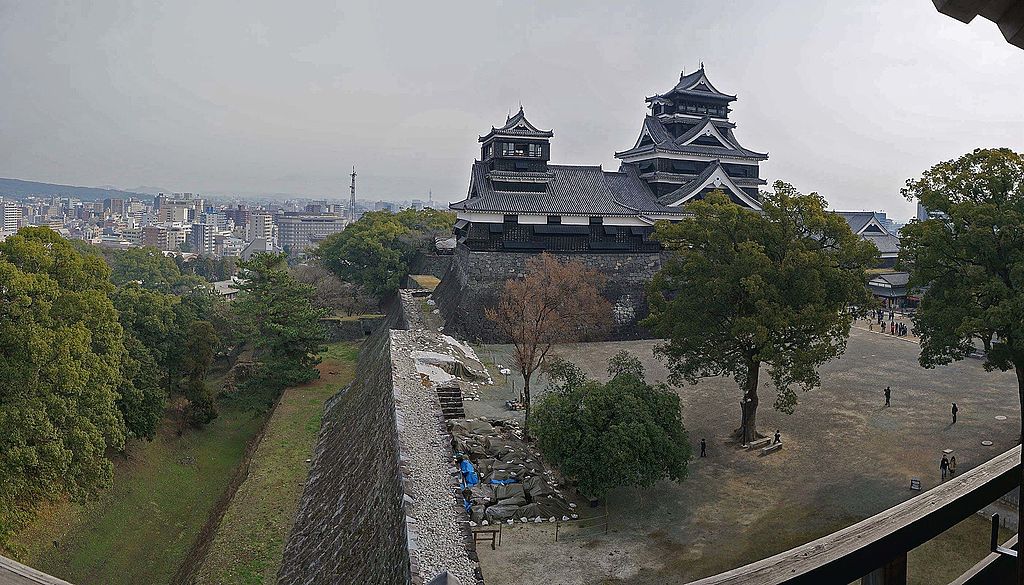Jul 25, 2022
The History of Kumamoto Castle
There are many castles throughout Japan, but Kumamoto Castle has a particularly rich history. In addition, it is one of just three considered premier castles, with the other two being Himeji Castle and Matsumoto Castle. While active, it was an expansive, well-fortified castle. Most of what you see today is a reconstruction, although some ancillary wooden buildings belonged to the original complex.
Construction of the Castle
Where Kumamoto Castle stands today was the site of fortifications built in 1467 and expanded in 1496. The castle dates back to 1601, although it wasn’t completed until 1607. The construction process involved creating a complex with multiple turrets and gates.
The castle’s founder was the daimyo Kato Kiyomasa whose mother is believed to be the cousin of the shogun Toyotomi Hideyoshi, the second Great Unifier of Japan. In addition to ordering the construction of Kumamoto Castle, Kiyomasa contributed to the conservation of forests, development of rice fields, and flood control in the area — all projects that still have an impact today. He also negotiated trade deals with Spain and Portugal that benefited his constituents.
The Satsuma Rebellion
The Kato clan only maintained control of Kumamoto Castle until 1632, at which point Hosokawa Tadatoshi took it over. The castle remained with the Hosokawa clan until 1871, when it was besieged in the Satsuma Rebellion.
Over 52 days, Lieutenant General Tani Tateki led 3,500 troops to protect the castle. However, the Satsuma Army consisted of 13,000 soldiers, and they burned the castle keep and other parts of the complex. Just 13 buildings survived unscathed — today, these are classified as Important Cultural Properties. That the castle could stand for so many days and some parts were still undamaged at the end of the conflict demonstrates the strength of the fortress.
Modern History
Kumamoto Castle was reconstructed in 1960 and further restored between 1998 and 2008, with the completion of the Inner Palace occurring in 2007. However, a magnitude-6.2 earthquake in 2016 undid some of this work: part of the stone wall collapsed, and some shachihoko from the roof fell and shattered. Interestingly, this 2016 earthquake was of similar magnitude and caused comparable damage as the 1889 Kumamoto earthquake.
Unfortunately, this was not all. The day after the first earthquake, a magnitude-7.3 quake destroyed two turrets and more exterior walls. The damage could have been worse, though, as the roof tiles were designed to fall in the event of an earthquake to avoid the roof collapsing. Nonetheless, Honmaru Goten Great Hall is still closed to the public as it undergoes repairs.
Kumamoto Castle is a must-see for anyone with interest in Japanese history. The complex has some interesting features as well as the original buildings and the reconstructed keep. For instance, you’ll find some walls that (despite appearing easy to climb) have proved impossible to scale even for samurai, a ginkgo tree grown from a seed planted by Kato Kiyomasa, and stone walls in a labyrinth formation that contributed to the castle’s defense.


About the author